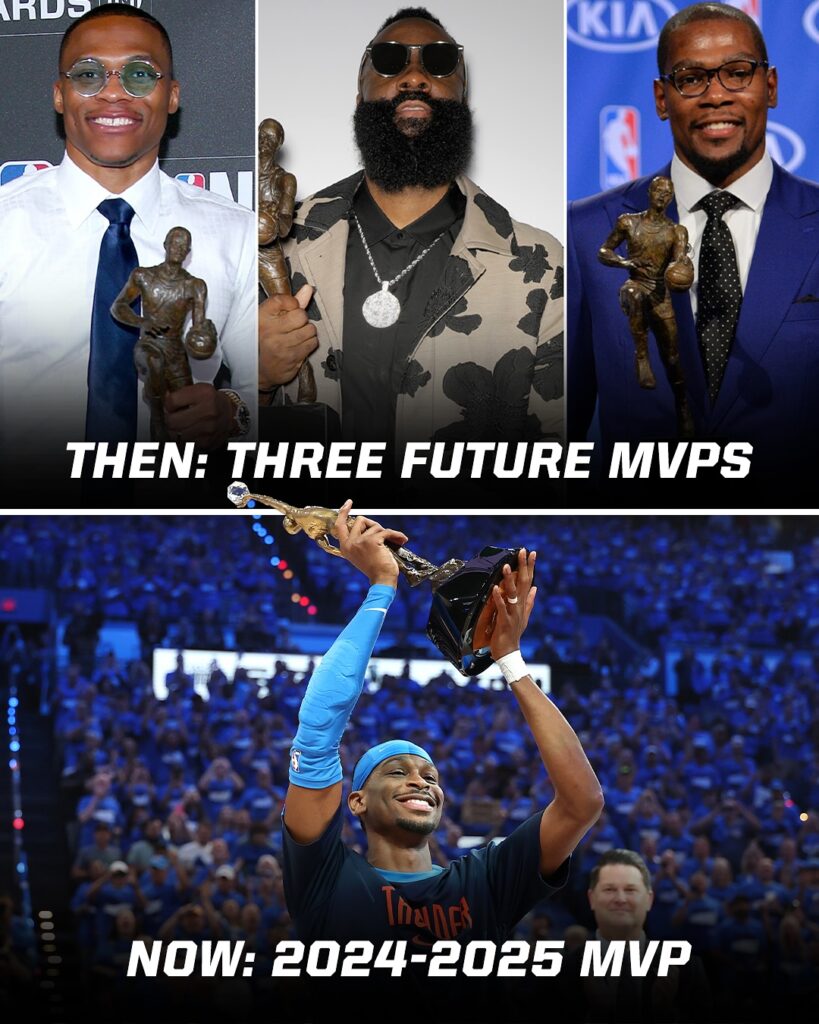
The NBA has long been a league of evolution—of shifting styles, transcendent players, and moments that define generations. When fans talk about eras, certain years stand out. 2012 was one of them, a turning point in basketball history. Now, in 2025, we’re witnessing another. Though these two years are separated by over a decade, the comparisons are already flying. From the structure of the game to the icons who lead it, 2012 and 2025 represent two distinct visions of the NBA, yet they both embody its enduring magic.
In 2012, the league was dominated by emerging superteams and iconic rivalries. The Miami Heat, led by LeBron James, Dwyane Wade, and Chris Bosh, had their eyes set on redemption after their loss to the Dallas Mavericks in the 2011 Finals. They were facing off against a young, hungry Oklahoma City Thunder squad starring Kevin Durant, Russell Westbrook, and James Harden—all under 24 years old. That Finals series wasn’t just about a championship—it was a cultural moment. It was LeBron’s coronation, KD’s first real taste of Finals pressure, and the beginning of the end for OKC’s young core.
Fast forward to 2025, and the faces have changed, but the stakes remain high. Today’s league is more global, more versatile, and more analytically driven. Players like Jayson Tatum, Luka Dončić, Victor Wembanyama, and Anthony Edwards are now leading the charge, bringing unique styles that reflect how much the game has evolved. The court is spaced out more than ever. Centers shoot threes. Point guards rebound. Coaches are no longer drawing up mid-range sets—they’re calculating Expected Shot Value. But despite all the changes in style, the chase for greatness is just as intense.
So how do these eras really compare?
Star Power and Legacy Building
The stars of 2012 were larger-than-life personalities. LeBron was in the heat of his prime, Durant was the league’s top scorer, and Kobe Bryant was still active, fiercely competitive in his twilight years. The NBA was still coming down from the post-Jordan era and searching for a new face. By 2012, it was clear: LeBron was next in line. The Finals that year gave him the title he needed to silence critics and mark the start of his dynasty.
In 2025, the league has no shortage of stars, but no one has completely taken the throne. Luka Dončić is arguably the most talented offensive player in the game today—crafty, clutch, and a triple-double machine. Tatum has grown into a quiet leader, consistent and unshakable in big moments. And then there’s Wembanyama, the 7’4” French phenomenon rewriting the rulebook with every game he plays. These players may not have the same media firepower as 2012’s big names (at least not yet), but in terms of skill and impact, they’re right there. What separates them is what they’re chasing: legacy.
Style of Play

The stylistic contrast between 2012 and 2025 is stark. The 2012 Heat played bully-ball with a touch of finesse. Their offense relied heavily on isolation sets, mid-range jumpers, and physical drives to the rim. LeBron’s post game was a staple, and D-Wade’s slashing was lethal. The Thunder, on the other hand, thrived on athleticism, fast breaks, and quick pull-up jumpers—often criticized for being too iso-heavy themselves.
In 2025, it’s almost an entirely different sport. Teams shoot upwards of 40 three-pointers a night. Ball movement, spacing, and defensive switchability are key. Everyone on the floor is expected to do a bit of everything—shoot, defend, rebound, pass. Centers like Wembanyama are guarding on the perimeter and hitting threes. Guards like Tyrese Haliburton or Cade Cunningham are orchestrating offense with precision, often looking more like quarterbacks than traditional scorers. It’s a beautiful chaos, but one rooted deeply in strategy.
Globalization and Media

Another major difference? The reach of the game. In 2012, the NBA was global, but in 2025, it’s everywhere. The rise of international stars like Giannis Antetokounmpo, Luka, and Wemby has turned the Finals into a worldwide event. Fans from Paris, Tokyo, and Lagos follow the league as passionately as those in New York or Los Angeles. Social media isn’t just commentary anymore—it’s part of the show. Highlights go viral in seconds, and debates rage 24/7 across podcasts, streams, and AI-generated breakdowns.
In 2012, Twitter was only beginning to shape sports dialogue. “Heatles” memes, Skip Bayless rants, and LeBron jokes were the peak of basketball discourse. Now, you have virtual courtside experiences, player-run media brands, and fans breaking down film like analysts.
What’s Constant: The Chase for Greatness
Yet, with all the differences, one thing remains the same—the hunger. Whether it was LeBron in 2012 proving he could win it all, or Tatum in 2025 trying to bring Banner 18 to Boston, every Finals carries the weight of legacy. Championships define careers. They separate All-Stars from legends. And in both eras, we see players sacrificing, adjusting, and elevating their games to etch their names in history.
The 2012 vs. 2025 debate isn’t about which is better—it’s about appreciating both. The raw intensity of 2012 gave us unforgettable rivalries and breakout moments. The versatility of 2025 showcases just how far the game has come, with more creativity and inclusion than ever before. What unites them is that unshakable feeling every June—the anticipation, the drama, and the belief that you’re witnessing greatness unfold in real time.



